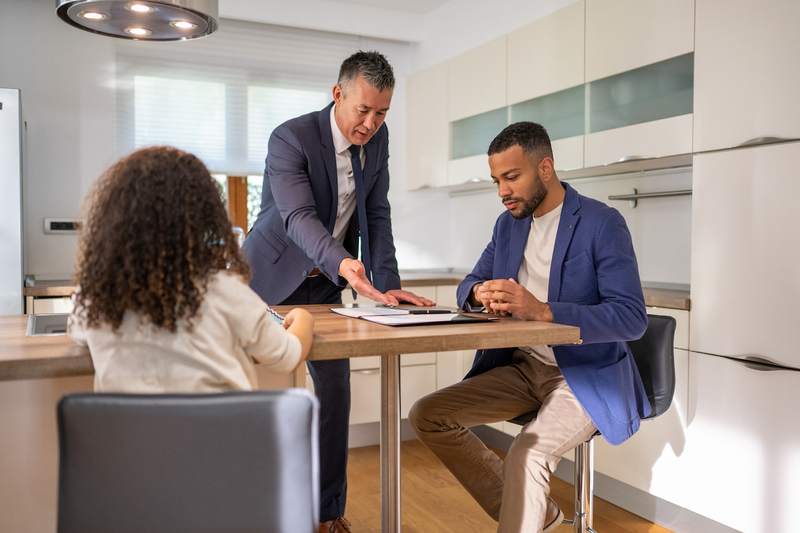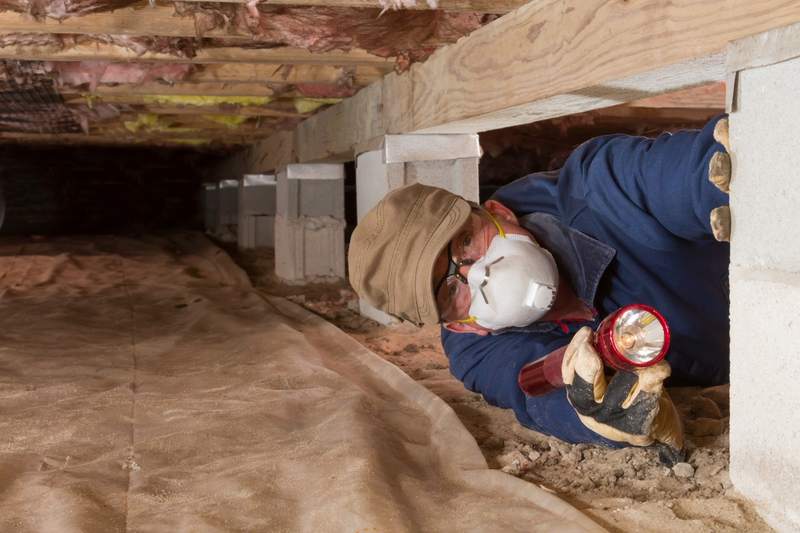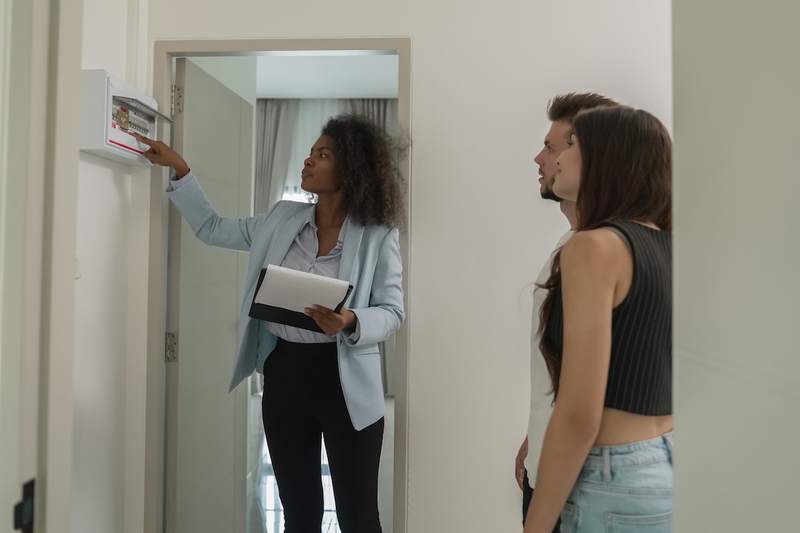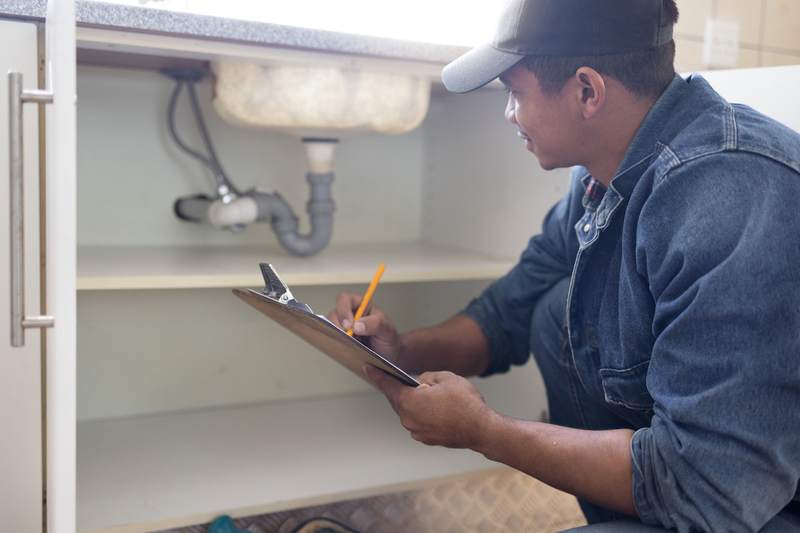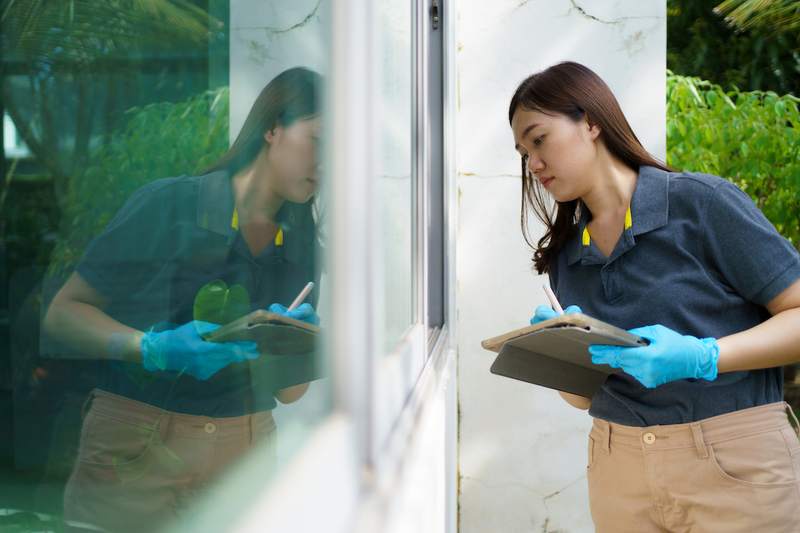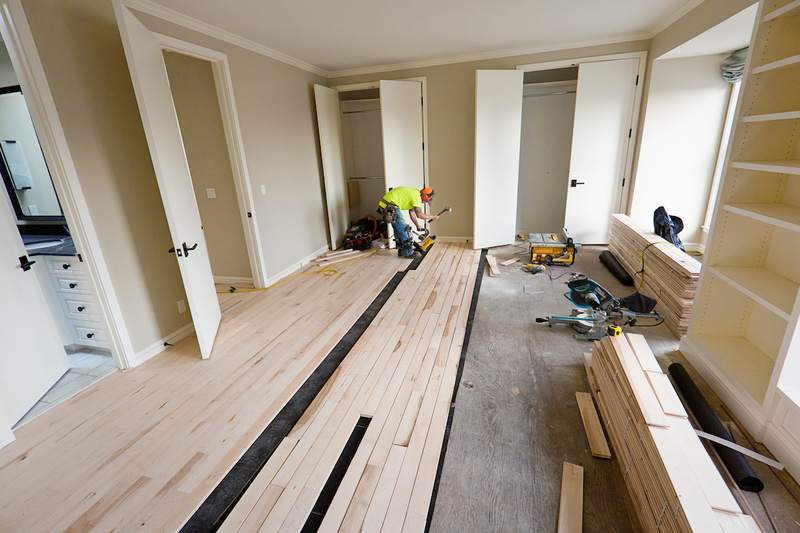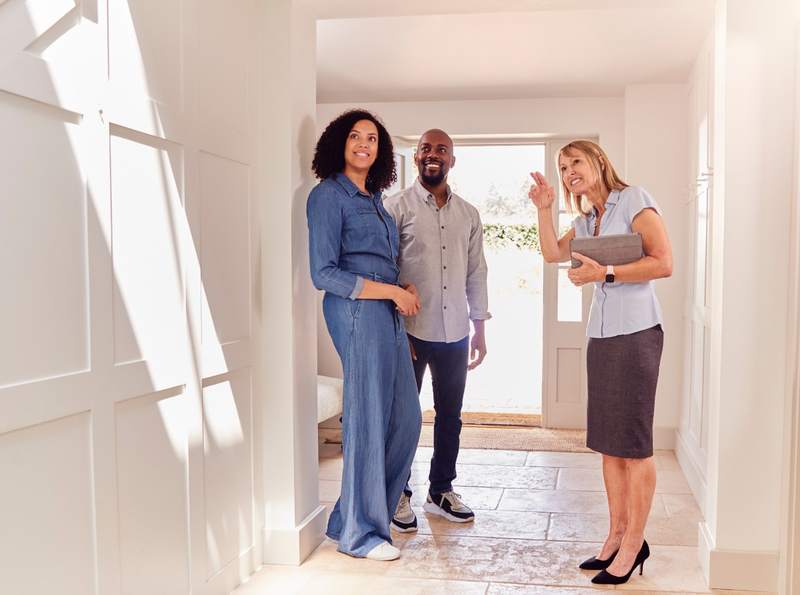
Touring a home is a big step in your homebuying journey. A home may look nice in a listing, but it’s not until you’re walking through the premises that you can really determine if it checks off all the important boxes.
Here’s a look at some things to look out for when touring a house.
1. Square Footage
The square footage of a home is the amount of livable space it has. It affects your home’s value, how much you’ll pay in property taxes, and future home improvement possibilities.
Square footage also is subjective, so have your real estate agent confirm that the actual square footage of the home matches the listing.
According to 2022 Census data, the median size of a new single-family house was 2,299 square feet.
2. Floor Plan
The floor plan refers to the arrangement of rooms in the home.
In recent years, open-concept floor plans have increased in popularity. Instead of separating common spaces with walls, open-concept homes combine those rooms into one large space.
Take note of the varying floor plans in different types of homes to determine which layout feels most comfortable to you. Here’s what you’ll find on a floor plan:
- Bedrooms. If you have a family, then there’s likely a minimum number of bedrooms that you’ll need. If you’re living alone, you may need only one.
- Bathrooms. A full bath is a bathroom that contains all four elements of a bathroom: a toilet, sink, bathtub, and shower. There also are half baths, three-quarter baths, and quarter baths.
- Kitchen. Make sure the kitchen has everything you need and is fully functional, especially if you’re someone who frequently cooks at home. The appliances may be something you can ignore on a house tour, because the seller might take these with them when they move out.
- Storage space. Make sure there’s enough cabinets in the kitchen and pantry for your needs, and the bedroom has enough closet space to accommodate your wardrobe. If there isn’t enough storage space, your house can feel cluttered and crowded.
- Unpermitted additions. Unpermitted additions are changes in a home that are made without attaining the proper permits to do so. If you notice an addition that wasn’t included in the listing, one of the questions you should ask on the house tour is if that space is permitted. Otherwise, unpermitted additions become the responsibility of the new homeowner, and you may need to pay for the fines and permits yourself.
3. Structural Issues
Structural issues can be dangerous and expensive, so it’s best to catch them as soon as possible. This isn’t your last opportunity to address a structural issue, since before you close on the house, you’ll have a home inspection where you can ask questions about the home’s structural integrity.
Here are some signs of structural problems to look out for on the home tour:
- Water damage. If you see any peeling paint, bubbling on the walls, or warping floors, it could mean that there’s water damage. Be sure to check the roof, basement, and areas surrounding pipes and plumbing for water damage, taking note of any musty or damp smells.
- Walls and floor. Examine the condition of the walls and floor to see if there are any cracks or rotting wood. Large cracks in the floor or walls could indicate there’s a problem with the foundation.
- Roof. Don’t forget to safely check the condition of the roof to see if there’s any damage or missing shingles. The cost to repair a roof is around $9,000, on average.
4. Systems That Need To Be Repaired or Replaced
In general, you’ll want to check the age and condition of all the major systems in the house. These systems should be repaired or replaced periodically due to natural wear and tear, and can add to the costs of buying a home.
Look out for these major systems:
- Water pipes. Turn on the faucets to check for water pressure, water color, and the sound when water comes out. Low water pressure could mean a busted pipe, while brown water is often a sign that the pipes are corroded. If the faucet makes a gurgling or bubbling sound, it could mean a damaged pipe is letting air in.
- Gas pipes. If the home has a gas stove, turn it on and check if the burner emits a blue flame. Blue flames are a sign of healthy gas pipes, while orange or red flames indicate trouble. You can also use a gas leak detector.
- Electrical wiring. Test out the light switches and bring a plug-in device — like a phone charger — to test the outlets. Electrical wiring that’s been damaged or poorly done can be a fire hazard.
5. Exterior Factors
You’ll also want to inspect the outside of the home. Here are some exterior factors to look for:
- Fence and yard. Has the landscaping been maintained, or are there overgrown trees and bushes? Look at the condition of the fence and keep in mind that some homeowners associations don’t allow fences or have rules about how they can be constructed.
- Sprinkler system. If the home has a sprinkler system, turn it on to make sure that it’s distributing water effectively.
- Sewer line. Do a sniff test around the yard. If you smell sewage or the lawn has water bubbles, it could be a sign that the sewer line is broken.
- HVAC system. Turn on the heating, ventilating, and air conditioning system to see if it works effectively and efficiently. An old HVAC system that wastes energy can lead to steep utility bills. Even if you’re touring a home in the middle of the summer, it’s still important to test out the heating features so you don’t discover any issues down the line.
- Garage door. See if the garage door needs to be replaced or repainted, and make sure it opens and closes properly.
- Crawl space. A crawl space is the unfinished space between the ground and first floor of the house. Take a look at the crawl space to see if there’s any mold, rot, or signs of pests.
6. Interior Factors
Here are some factors to consider when touring the inside of the home:
- Windows. Test if the windows open, close, lock, and unlock securely. Condensation on windowpanes can be a sign of drafty windows, which can increase heating and cooling costs.
- Natural light. Take note of the natural light in the home, especially if you like to raise plants or want to save on energy costs from keeping the lights on.
- Shoddy DIY repairs. We’ve all been there. Something breaks and you tell yourself you can save money by fixing it yourself. Keep an eye out for any do-it-yourself repairs that the homeowner may have performed themselves.
7. Other Things To Look For When Touring a Home
Here are some additional things to look for on your house tour:
- Age of the home. Older homes can have a historical charm and distinguished personality — but they also can come with aging systems that require more maintenance and safety issues. For example, if the home was built before 1980, it could contain asbestos insulation and lead paint.
- Suspicious odors. If you smell a musty odor, it could mean that the home contains mold or mildew, which can lead to health problems and respiratory issues.
- Vulnerability to natural hazards. Natural hazards can lead to expensive damage. Ask if the home is vulnerable to flooding or fire and inspect the health of surrounding trees that could fall during heavy winds.
- Neighborhood and location. It can help to stop by at different times of the day to really get a sense for what it’s like to live in the area. Take note of how well the neighbors maintain their homes, since this can affect your property value.
- Parking. Is there a garage or covered parking? Parking a car outdoors or in an unsecured garage can lead to higher car insurance premiums.
FAQ
Here are the answers to some frequently asked questions about what to look for on a house tour.




